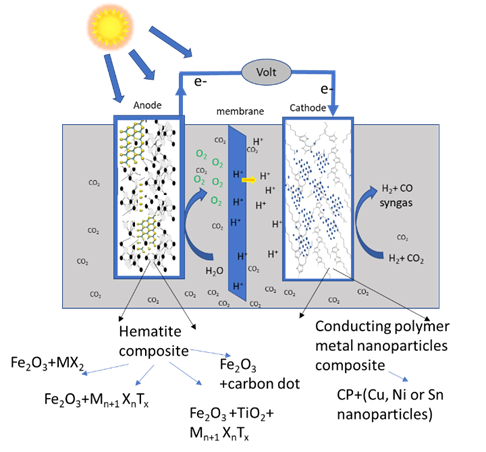Advantages:
- This technology offers efficient syngas production from carbon dioxide using advanced photocatalytic materials.
- The resulting syngas can power electronics, cooking, and even generate electricity, offering versatile utility.
- Utilizing varying levels of electricity, this method demonstrates a promising pathway for eco-friendly energy generation.
Summary:
This technology introduces a novel method for producing syngas using advanced photocatalytic materials within a customized photoelectrochemical cell. The cathode electrode is composed of a combination of conducting polymer and nanoparticles (cu, zinc, or tin), while the anode electrode incorporates hematite along with MoS2, Mxene, titanium oxide, and carbon dot doping. By introducing compressed CO2 gas into the electrolyte, efficient conversion of carbon dioxide into syngas (CO+H2) occurs, applicable across both acidic and basic conditions. This innovation holds significant promise, spanning applications from powering electronic devices, cooking, and soldering to substantial electricity generation. Enabled by photocurrent fluctuations ranging from 0 mV to 2500 mV, this process facilitates water splitting and syngas production, offering a compelling avenue for sustainable energy deployment.

Schematic of photoelectrochemical cell for production of syngas
Desired Partnerships:
- License
- Sponsored Research
- Co-Development